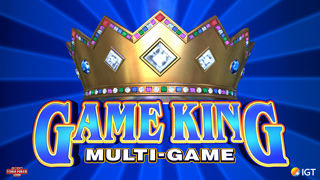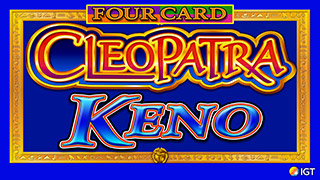AZ LOTTERY RNG ANALYSIS AND ISSUES REPORT
-
phnxnmartini
- Senior Member
- Posts: 114
- Joined: Mon Jun 15, 2009 11:33 am
AZ LOTTERY RNG ANALYSIS AND ISSUES REPORT
So it turns out that the "RM-60 radiation monitor" failed. Here is the full report:
Multi-State Lottery Association
Random Number Generator Report
Executive Summary
March 01, 2018
1
Game Drawing Services Agreement:
On May 18, 2014, the Multi-State Lottery Association (MUSL) entered into a Game Drawing
Services Agreement (Agreement) with the Arizona Lottery (Arizona). The Agreement was
subsequently amended on September 15, 2015. The purpose of the Agreement was to have
MUSL perform electronic random number generator (RNG) drawings for Arizona state games.
In June-July 2015, MUSL built three (3) RNGs for this purpose. AZ RNG2 and AZ RNG1 were
used and secured in MUSL’s draw room. AZ RNG3 was sent to Arizona as a potential backup
machine and/or to perform other state drawings or raffles. On April 15 and again on July 2,
2015, BMM Testlabs provided Compliance Certifications for MUSL Quantum Vision v2.0.0.0
using the Micro Roentgen Radiation Monitors (Model RM-60). Quantum Vision v2.0.0.0 was
installed and was operated on all three machines.
Incidents:
On Wednesday, October 4, 2017, Arizona officials notified MUSL’s Executive Director that the
same game numbers were repeating on consecutive draws. Four Arizona games (Pick 3,
Fantasy 5, All or Nothing and 5 Card Cash) were affected between September 21 and October
03, 2017. Arizona and MUSL Staff isolated the issue to one machine, AZ RNG2, and immediately
removed and secured it for testing.
On October 9, November 15 and November 21, 2017, the same Arizona Pick 3 numbers (8-0-4)
were selected from the remaining RNG, AZ RNG1. No other Arizona games were affected.
MUSL’s internal auditor examined the pre-post and post-draw tests and found the results to be
within expected norms. On November 22, 2017, out of an abundance of caution, AZ RNG1 was
also removed from service and secured, pending third party testing.
Actions:
The Arizona Lottery Executive Director notified MUSL’s Executive Director of the above events.
In accordance with MUSL’s IT Incident Response Plan, MUSL’s Executive Director notified the
Board President and Audit Committee Chair and instructed the Chief Audit Executive to
immediately initiate an independent review of the events. All actions and findings were under
the auspices of the Audit Committee.
An independent third-party forensic technology firm tested the hardware in both AZ RNG2 and
AZ RNG1 and the RM-60 monitor from AZ RNG3. The firm also performed a limited review of
the source code.
An independent statistical expert was also hired to evaluate the probability and frequency of
Pick 3 numbers repeating and compare expected results to the actual AZ RNG1 draw events.
2
Test Results:
AZ RNG2 (numbers repeating on consecutive draws)
• Hardware Failure
MUSL’s digital draw systems contain an analog Geiger counter (RM-60). The RM-60
measures the radioactive output from a commercially available synthetic element called
Americium. The measurement results in a 32-bit true random number, which is used to
seed the algorithm that generates the draw results. The RM-60 was tested and deemed
inoperative.
The manufacturer indicated that in certain circumstances the RM-60 radiation monitor
may overheat resulting in the fracture of an internal glass tube. The impact of which
renders the RM-60 inoperative.
• Source Code
MUSL’s software retrieves a 32-bit random number generated by the aforementioned
RM-60. These numbers become the algorithmic seed that generates game results. The
RM-60 software attempts to generate a 32-bit random number five times, and MUSL’s
code attempts to retrieve it five times. After five attempts, the generation and retrieval
process stops. If the retrieval process is unsuccessful, MUSL’s software does not stop
but continues until the program has executed. As a 32-bit random number was never
generated or retrieved, the underlying algorithm executes using a default setting of
zero. The exact same seed, zero in this case, will always create the same winning
numbers, and assuming no other factors influence the algorithmic selection.
Conclusion AZ RNG2:
The forensic firm concluded that the RM-60 in AZ RNG2 was inoperative. The faulty
hardware was therefore unable to generate a random number seed. This ultimately resulted
in MUSL’s game algorithm using a seed of all zeros. Additionally, MUSL’s code did not
contain a function to stop the draw if the RM-60 failed. The same seed will always produce
the same results, thus identical numbers on consecutive draws.
AZ RNG1 (Pick 3):
AZ RNG1 was removed from service after 8-0-4 appeared in drawings on October 9,
November 15 and November 21, 2017. AZ RNG1 was tested by the aforementioned
independent third-party forensic technology firm. Additionally, draw results for Pick 3 were
evaluated by an independent statistical expert and are described below.
Conclusion AZ RNG1:
The RM-60 in AZ RNG1 was tested and deemed to be operating within the manufacturer’s
guidelines and generating apparently valid results. (See Statistical Analysis below.)
3
AZ RNG3:
AZ RNG3 (the back-up machine) is not in scope for this review with the following caveat.
After AZ RNG2 was removed from service, Arizona attempted to activate AZ RNG3 as part of
a draw contingency plan. Arizona draw staff concluded that AZ RNG3 was inoperative and
contacted MUSL. MUSL personnel flew to Phoenix, examined the machine and replaced the
internal analog Geiger counter. After replacing the RM-60, Arizona and MUSL personnel
concluded that AZ RNG3 was now operational.
Conclusion AZ RNG3:
The old RM-60, removed from AZ RNG3, was subsequently tested by the aforementioned
independent third-party forensic technology firm and deemed inoperative.
Statistical Analysis (AZ RNG1 - Pick3)
Background:
As a precautionary measure, noted above, MUSL AZ RNG1 was also removed from service in
response to the following events:
1. AZ RNG2 hardware failure and repeating game results, and
2. Potential patterns in Pick 3 game results.
Objective and Scope:
An independent statistical expert was engaged to evaluate the probability and frequency
that three numbers, each ranging from zero to nine, would repeat within a draw population
of 742 events. The purpose of this exercise was to determine whether actual Pick 3 results
were consistent with predicted outcomes.
Conclusion:
Based upon the evidence of three comparative examinations, it does appear that what
transpired, in aggregate across the 29-month period, is largely consistent with what one
would expect to see probabilistically. Although there were a few instances when the same
3-digit numbers appeared, the models would indicate that this is to be expected. Similar
conclusions can be stated when examining each of the three digits separately, or any of the
three pairs of digits separately. There were some small deviations from expected outcomes
(i.e., anomalies) contained within the data, but these will typically be present in such data,
even if the draw mechanisms are working appropriately.
Furthermore, and this is the key, if we go back to our full set of 742 observations, it is not
unreasonable to have a small set of three-digit numbers occur 3, 4, or even 5 times among
the set of winners. In our data, no (set of) number(s) occurred more than 5 times, with
only two numbers occurring exactly 5 times (8-0-4 and 9-1-9). Thus, it is within the realm
of what might occur naturally for 8-0-4 to have occurred 5 times between 7/15 and 11/17.
Multi-State Lottery Association
Random Number Generator Report
Executive Summary
March 01, 2018
1
Game Drawing Services Agreement:
On May 18, 2014, the Multi-State Lottery Association (MUSL) entered into a Game Drawing
Services Agreement (Agreement) with the Arizona Lottery (Arizona). The Agreement was
subsequently amended on September 15, 2015. The purpose of the Agreement was to have
MUSL perform electronic random number generator (RNG) drawings for Arizona state games.
In June-July 2015, MUSL built three (3) RNGs for this purpose. AZ RNG2 and AZ RNG1 were
used and secured in MUSL’s draw room. AZ RNG3 was sent to Arizona as a potential backup
machine and/or to perform other state drawings or raffles. On April 15 and again on July 2,
2015, BMM Testlabs provided Compliance Certifications for MUSL Quantum Vision v2.0.0.0
using the Micro Roentgen Radiation Monitors (Model RM-60). Quantum Vision v2.0.0.0 was
installed and was operated on all three machines.
Incidents:
On Wednesday, October 4, 2017, Arizona officials notified MUSL’s Executive Director that the
same game numbers were repeating on consecutive draws. Four Arizona games (Pick 3,
Fantasy 5, All or Nothing and 5 Card Cash) were affected between September 21 and October
03, 2017. Arizona and MUSL Staff isolated the issue to one machine, AZ RNG2, and immediately
removed and secured it for testing.
On October 9, November 15 and November 21, 2017, the same Arizona Pick 3 numbers (8-0-4)
were selected from the remaining RNG, AZ RNG1. No other Arizona games were affected.
MUSL’s internal auditor examined the pre-post and post-draw tests and found the results to be
within expected norms. On November 22, 2017, out of an abundance of caution, AZ RNG1 was
also removed from service and secured, pending third party testing.
Actions:
The Arizona Lottery Executive Director notified MUSL’s Executive Director of the above events.
In accordance with MUSL’s IT Incident Response Plan, MUSL’s Executive Director notified the
Board President and Audit Committee Chair and instructed the Chief Audit Executive to
immediately initiate an independent review of the events. All actions and findings were under
the auspices of the Audit Committee.
An independent third-party forensic technology firm tested the hardware in both AZ RNG2 and
AZ RNG1 and the RM-60 monitor from AZ RNG3. The firm also performed a limited review of
the source code.
An independent statistical expert was also hired to evaluate the probability and frequency of
Pick 3 numbers repeating and compare expected results to the actual AZ RNG1 draw events.
2
Test Results:
AZ RNG2 (numbers repeating on consecutive draws)
• Hardware Failure
MUSL’s digital draw systems contain an analog Geiger counter (RM-60). The RM-60
measures the radioactive output from a commercially available synthetic element called
Americium. The measurement results in a 32-bit true random number, which is used to
seed the algorithm that generates the draw results. The RM-60 was tested and deemed
inoperative.
The manufacturer indicated that in certain circumstances the RM-60 radiation monitor
may overheat resulting in the fracture of an internal glass tube. The impact of which
renders the RM-60 inoperative.
• Source Code
MUSL’s software retrieves a 32-bit random number generated by the aforementioned
RM-60. These numbers become the algorithmic seed that generates game results. The
RM-60 software attempts to generate a 32-bit random number five times, and MUSL’s
code attempts to retrieve it five times. After five attempts, the generation and retrieval
process stops. If the retrieval process is unsuccessful, MUSL’s software does not stop
but continues until the program has executed. As a 32-bit random number was never
generated or retrieved, the underlying algorithm executes using a default setting of
zero. The exact same seed, zero in this case, will always create the same winning
numbers, and assuming no other factors influence the algorithmic selection.
Conclusion AZ RNG2:
The forensic firm concluded that the RM-60 in AZ RNG2 was inoperative. The faulty
hardware was therefore unable to generate a random number seed. This ultimately resulted
in MUSL’s game algorithm using a seed of all zeros. Additionally, MUSL’s code did not
contain a function to stop the draw if the RM-60 failed. The same seed will always produce
the same results, thus identical numbers on consecutive draws.
AZ RNG1 (Pick 3):
AZ RNG1 was removed from service after 8-0-4 appeared in drawings on October 9,
November 15 and November 21, 2017. AZ RNG1 was tested by the aforementioned
independent third-party forensic technology firm. Additionally, draw results for Pick 3 were
evaluated by an independent statistical expert and are described below.
Conclusion AZ RNG1:
The RM-60 in AZ RNG1 was tested and deemed to be operating within the manufacturer’s
guidelines and generating apparently valid results. (See Statistical Analysis below.)
3
AZ RNG3:
AZ RNG3 (the back-up machine) is not in scope for this review with the following caveat.
After AZ RNG2 was removed from service, Arizona attempted to activate AZ RNG3 as part of
a draw contingency plan. Arizona draw staff concluded that AZ RNG3 was inoperative and
contacted MUSL. MUSL personnel flew to Phoenix, examined the machine and replaced the
internal analog Geiger counter. After replacing the RM-60, Arizona and MUSL personnel
concluded that AZ RNG3 was now operational.
Conclusion AZ RNG3:
The old RM-60, removed from AZ RNG3, was subsequently tested by the aforementioned
independent third-party forensic technology firm and deemed inoperative.
Statistical Analysis (AZ RNG1 - Pick3)
Background:
As a precautionary measure, noted above, MUSL AZ RNG1 was also removed from service in
response to the following events:
1. AZ RNG2 hardware failure and repeating game results, and
2. Potential patterns in Pick 3 game results.
Objective and Scope:
An independent statistical expert was engaged to evaluate the probability and frequency
that three numbers, each ranging from zero to nine, would repeat within a draw population
of 742 events. The purpose of this exercise was to determine whether actual Pick 3 results
were consistent with predicted outcomes.
Conclusion:
Based upon the evidence of three comparative examinations, it does appear that what
transpired, in aggregate across the 29-month period, is largely consistent with what one
would expect to see probabilistically. Although there were a few instances when the same
3-digit numbers appeared, the models would indicate that this is to be expected. Similar
conclusions can be stated when examining each of the three digits separately, or any of the
three pairs of digits separately. There were some small deviations from expected outcomes
(i.e., anomalies) contained within the data, but these will typically be present in such data,
even if the draw mechanisms are working appropriately.
Furthermore, and this is the key, if we go back to our full set of 742 observations, it is not
unreasonable to have a small set of three-digit numbers occur 3, 4, or even 5 times among
the set of winners. In our data, no (set of) number(s) occurred more than 5 times, with
only two numbers occurring exactly 5 times (8-0-4 and 9-1-9). Thus, it is within the realm
of what might occur naturally for 8-0-4 to have occurred 5 times between 7/15 and 11/17.
-
DaBurglar
- Video Poker Master
- Posts: 4535
- Joined: Thu Jun 16, 2011 12:11 pm
I rest my case(s)......j/kWhat on earth possessed you to post this phnxmartini? I read thru the whole thing (twice)....how cheap is Arizona to co-op Micro Roentgen Radiation Monitors (RM-60) to perform lottery RNG functionality?? This was the best solution in their eyes, for the state's lottery needs?
-
phnxnmartini
- Senior Member
- Posts: 114
- Joined: Mon Jun 15, 2009 11:33 am
As you can see, RNG's are complicated machines and I do not think anyone can explain how they work easily!
-
FAA
- Video Poker Master
- Posts: 9424
- Joined: Wed May 28, 2014 11:58 am
This is why I hate the Quick Pick option on Mega Millions or Power Ball on the rare occasions that I participate. The numbers in the first game tend to repeat. That removes a lot of fun.
-
Vman96
- Video Poker Master
- Posts: 3298
- Joined: Tue Jul 26, 2011 12:49 am
Wow...this isn't the first time Arizona hasn't screwed up the RNG code either. It also happened in 2013. If humans screw up the coding, there is obviously a chance for significant non-random events.
https://arstechnica.com/tech-policy/201 ... n-arizona/
https://arstechnica.com/tech-policy/201 ... n-arizona/
-
DaBurglar
- Video Poker Master
- Posts: 4535
- Joined: Thu Jun 16, 2011 12:11 pm
You can not just put blind absolute faith in things like casinos (or lotteries), the games therein, the people who run and oversee the operations, etc. Certainly, confidence in the overall integrity and propriety of most casinos and lotteries is warranted, but always allow for the possibility that things can go wrong (intentionally or by accident) and you will never be waylaid or unpleasantly surprised!
My latest excursion to AC, 04-06 thru today 04-10, just came to an end (thus far my first and only experience of the new year, 2018, involving any casino and gaming action...the trend in my life of less and less VP and casino silliness continues... I'll be reporting on it later, and hope jeter reports too since I met up with him, and this very issue of casino integrity and the randomness of the games was a central topic of conversation and concern as we watched our bankrolls shrink ....
My latest excursion to AC, 04-06 thru today 04-10, just came to an end (thus far my first and only experience of the new year, 2018, involving any casino and gaming action...the trend in my life of less and less VP and casino silliness continues... I'll be reporting on it later, and hope jeter reports too since I met up with him, and this very issue of casino integrity and the randomness of the games was a central topic of conversation and concern as we watched our bankrolls shrink ....
-
Tedlark
- Video Poker Master
- Posts: 8742
- Joined: Mon Oct 02, 2006 12:29 am
That's too bad DaBurglar; I'm upset to hear of your shrinking bankroll.



























































